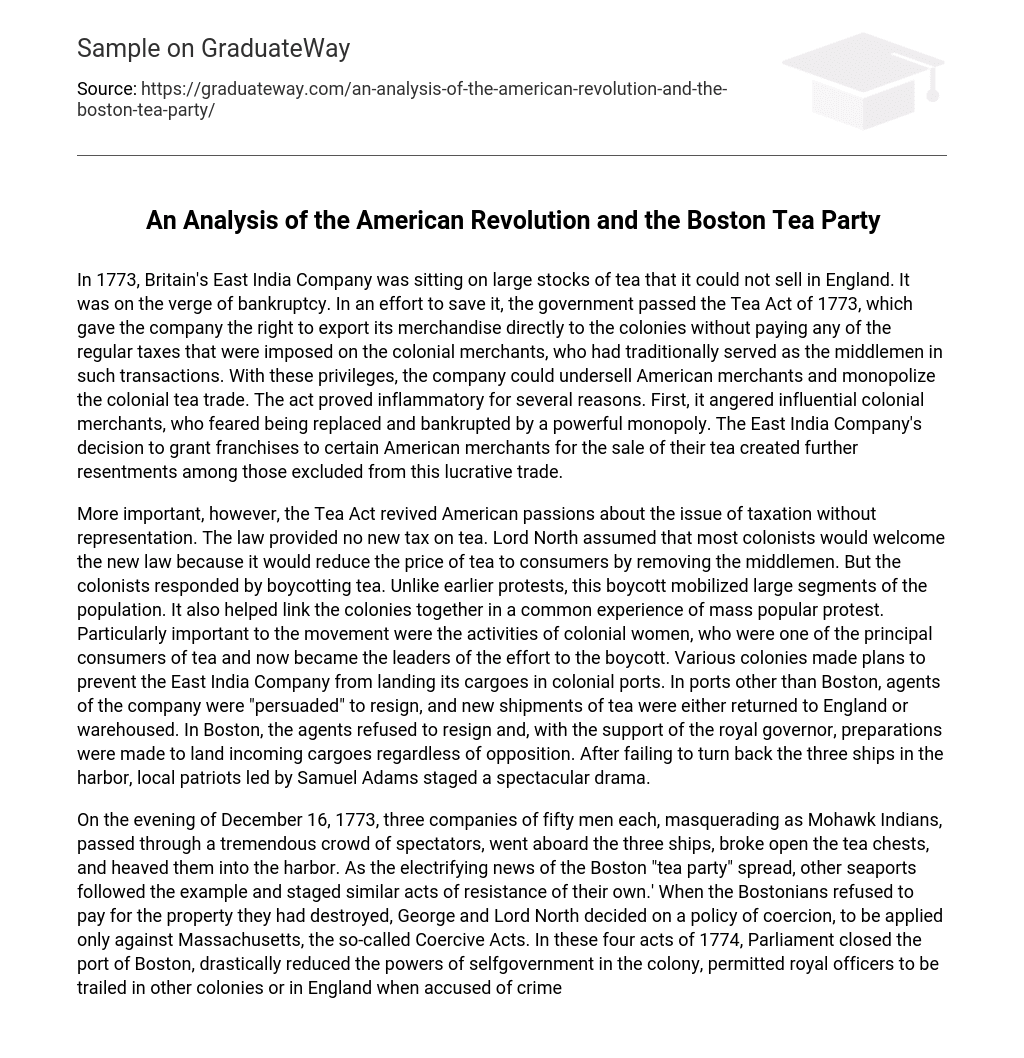In 1773, the East India Company of Britain faced a significant challenge as it had a surplus of tea that could not be sold in England, putting the company on the brink of bankruptcy. To salvage the situation, the government enacted the Tea Act of 1773. This act granted the company the exclusive right to export its merchandise directly to the colonies without having to pay the customary taxes imposed on colonial merchants who acted as intermediaries. By enjoying these privileges, the East India Company was able to undercut American merchants and establish a monopoly in the colonial tea trade. The Tea Act provoked widespread anger for several reasons. First, it infuriated influential colonial merchants who feared that they would be ousted and financially ruined by a powerful monopoly. Additionally, resentment grew among those who were excluded from sharing in the prosperous tea trade after certain American merchants were granted franchises by the East India Company.
Furthermore, the Tea Act reignited American anger over taxation without representation. Although the law did not impose a new tax on tea, Lord North anticipated that colonists would welcome it due to the reduction in tea prices resulting from the removal of middlemen. However, instead of accepting the law, colonists initiated a tea boycott. This boycott, unlike previous protests, garnered significant support from the population and helped unite the colonies in a shared experience of mass popular protest. Key contributors to this movement were colonial women who, as major consumers of tea, became leaders in boycotting efforts. Different colonies devised strategies to prevent the East India Company from unloading its cargoes in colonial ports. In non-Boston ports, company agents were coerced into resigning and new tea shipments were either sent back to England or stored in warehouses. In Boston, however, the agents refused to resign and, with the backing of the royal governor, preparations were made to unload incoming tea cargoes despite opposition. When attempts to send back the three ships in the harbor failed, local patriots led by Samuel Adams orchestrated a dramatic confrontation.
On the evening of December 16, 1773, a group of men, disguised as Mohawk Indians, infiltrated three ships in Boston Harbor and broke open tea chests, throwing them into the water. This event is commonly referred to as the Boston “tea party” and it served as inspiration for other seaports to engage in similar acts of resistance. Despite causing destruction, the people of Boston refused to take responsibility for the property they had destroyed. Consequently, George and Lord North implemented Coercive Acts against Massachusetts in an effort to force compliance. These measures were passed in 1774 and consisted of four acts: closing the port of Boston, reducing self-government powers in the colony, allowing royal officers to be tried outside Massachusetts or England for their crimes, and authorizing troops to be quartered in colonists’ barns and empty houses. The enactment of these acts further intensified opposition along the East Coast.





